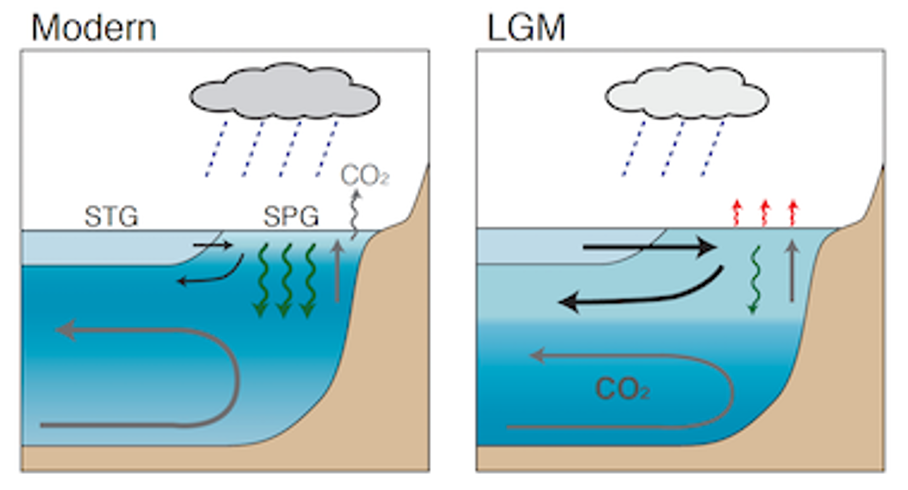Past Atmosphere and Ocean Changes

The atmosphere exerts a fundamental influence on the ocean circulation through surface fluxes of freshwater, heat, and momentum. For example, the absence of deep-water formation and meridional overturning in the modern North Pacific results in part from an excess of precipitation over evaporation due to atmospheric moisture flux convergence. We are interested in how the ocean circulation differed in past climates, in understanding how these changes are related to differences in atmospheric forcing, and in developing a mechanistic understanding of large-scale asymmetries in the global ocean circulation.
Our work has focused in particular on changes in the North Pacific ocean circulation over the last 21,000 years (Download Gray et al. 2018; Download Gray et al. 2020; Download Rae et al. 2020). We have found climate model and sediment-core-based proxy evidence that at the Last Glacial Maximum (LGM), 21,000 years ago, the jet stream was further south and the Aleutian Low was stronger than in the present climate, due in part to the stationary waves forced by the Laurentide Ice Sheet over North America. Model evidence suggests that this led to a stronger and larger North Pacific subpolar gyre circulation. These atmospheric and oceanic changes made the North Pacific less stratified and allowed for stronger ventilation down to intermediate depths, potentially even allowing North Pacific deep-water formation during stadial events. Using a similar combination of model and proxy evidence, our work has shown that the Southern Hemisphere westerlies were further equatorward at the LGM (Download Gray et al. 2023), which allowed for greater carbon storage in the deep ocean.
Ongoing work in the group looks at how the Atlantic Meridional Overturning Circulation (AMOC) changes in simulations of warmer and colder climates and reasons for differences in this response across climate models.